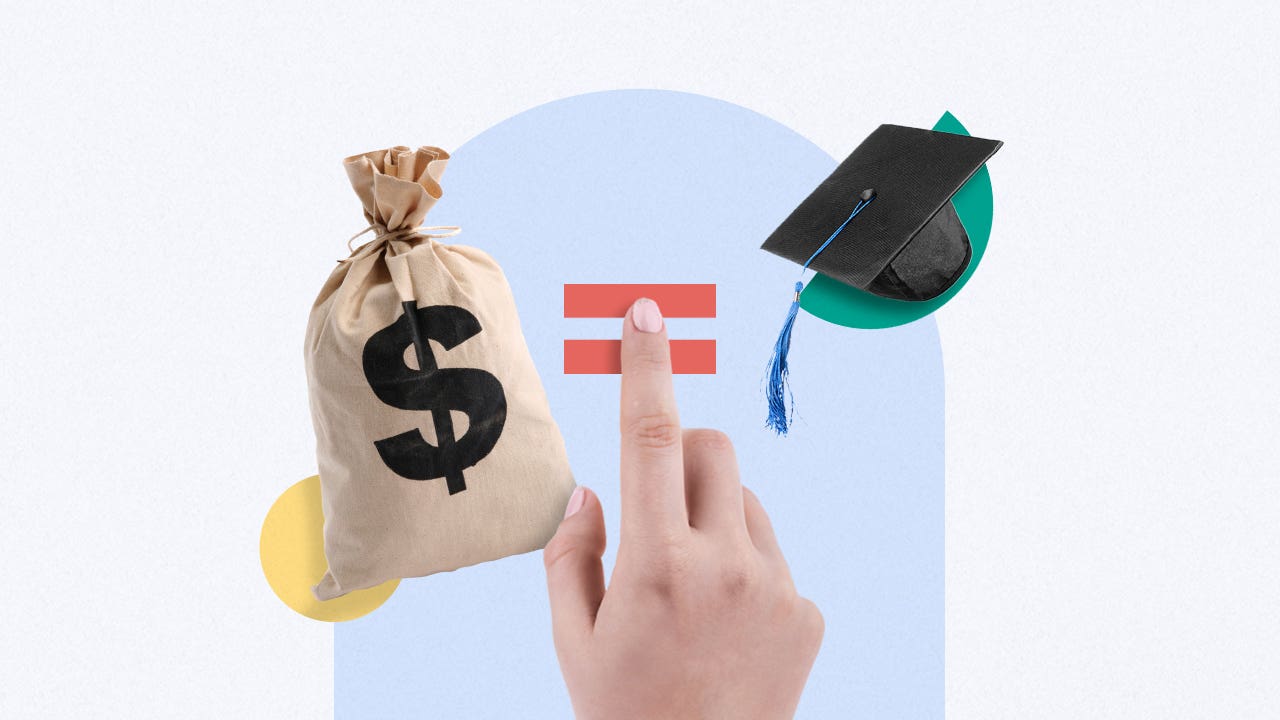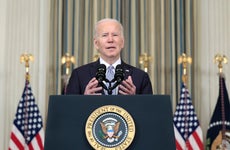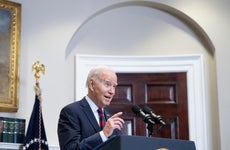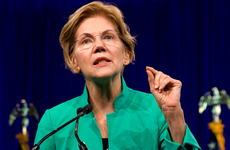The state of student loan forgiveness: What borrowers need to know

The Bankrate promise
At Bankrate we strive to help you make smarter financial decisions. While we adhere to strict , this post may contain references to products from our partners. Here's an explanation for .
In the news
Key takeaways
- Despite a ruling against Biden’s student loan forgiveness program in 2023, the administration continues its effort to provide relief for student loan borrowers.
- Under the Higher Education Act, Biden has forgiven millions in federal debt by amending existing relief and forgiveness programs.
- As of May 2024, The Biden-Harris Administration has provided $153 billion in debt relief to nearly 4.3 million student loan borrowers.
In the summer of 2023, the Supreme Court ruled to strike down Biden’s student loan forgiveness program, which would have canceled up to $20,000 of debt for roughly 43 million eligible borrowers. However, that hasn’t stopped the Biden-Harris administration from canceling student debt for millions of borrowers across the country.
Student loan forgiveness may not be completely off the table for you just yet. If you have federal student loans and qualify for any alternative or income-driven repayment plan, you may be eligible for cancellation.
Why the Supreme Court struck down Biden’s student loan forgiveness plan
The Supreme Court ruled in a 6-3 decision that the Biden administration does not have the authority to forgive student loans to this wide of a degree without an act of Congress.
The decision, announced on June 30, 2023 and written by Justice John Roberts, Chief Justice of the United States, says, “The HEROES Act allows the Secretary [of Education] to ‘waive or modify’ existing statutory or regulatory provisions applicable to financial assistance programs under the Education Act but… does not allow the Secretary to rewrite that statute to the extent of canceling $430 billion of student loan principal.”
The Supreme Court said such an expensive and broad plan couldn’t use the in-place policy to deal with national emergencies. The HEROES Act was originally meant to financially protect service members while they fought in Afghanistan and Iraq but was used during the COVID-19 pandemic for actions such as the pause on student loan payments.
The Supreme Court ruled that Biden couldn’t use the Act to provide such widespread cancellation during a national disaster. “Six States sued, arguing that the HEROES Act does not authorize the loan cancellation plan. We agree,” Roberts wrote.
Moving forward, similar broad forgiveness plans would need to be approved by Congress. However, this mandate doesn’t apply to the dozens of executive orders that Biden has made through pursuing alternative forgiveness paths.
A new path to student loan forgiveness
The Biden-Harris Administration recently created a new debt relief plan using the 1965 Higher Education Act (HEA), which outlines several federal financial aid programs. Under the new proposal, five groups of borrowers would be eligible for automatic forgiveness:
- Borrowers whose balances are now greater than what they originally borrowed due to interest accrual.
- Borrowers who entered repayment at least 10 years ago, including those who started repayment before income-driven repayment and newer forgiveness programs were created.
- Borrowers who are eligible for forgiveness under income-driven repayment or another program but haven’t applied.
- Borrowers who took out loans to attend programs that didn’t provide enough financial value for them to be able to afford their loans.
- Borrowers who have experienced financial hardship due to their student loans and that continue to experience hardship — despite the available options — because their needs aren’t addressed by the current system.
To date, the Biden-Harris administration has been able to approve nearly $160 billion in federal loan cancellation for roughly 4.6 million borrowers. Most of this relief has come from revamping existing forgiveness programs and alternative repayment plans, namely Public Service Loan Forgiveness (PSLF) and income-driven repayment (IDR) plans.
According to the Education Department, adjustments made to PSLF have resulted in $68.2 billion in federal student loan relief for over 876,000 borrowers. Long-standing improvements made to the IDR program resulted in another $42.9 billion being approved for over 996,000 borrowers.
Most recently, Biden announced that over 200,000 borrowers who were enrolled in the latest IDR plan — the SAVE Plan — were eligible for $3.6 billion in relief. This came days after Biden unveiled a proposal to forgive accrued interest balances on federal student loans.
What’s next for borrowers
Federal student loan borrowers need to stay in-the-know about federal student loan relief policies, regardless if they think they qualify or not. Information can be found on the Education Department’s website and through regularly checking student loans-related news.
It’s important that federal student loan borrowers hold off on refinancing with a private student loan at least until the 2024 election, if possible. When you refinance, you lose all of your federal benefits and relief potential.
With Biden making so many changes, it’s possible that you could be eligible for debt relief in the near future. There’s also a chance that you’re already eligible and are leaving student loan forgiveness on the table.
Check with your federal student loan servicer to see the current status of your loans and what you may qualify for.
Related Articles

New Biden student debt plan could forgive up to $20,000 in interest for millions

Biden administration forgives $1.2 billion in student loans through SAVE Plan


Congressional Democrats push for $50,000 in federal student loan forgiveness